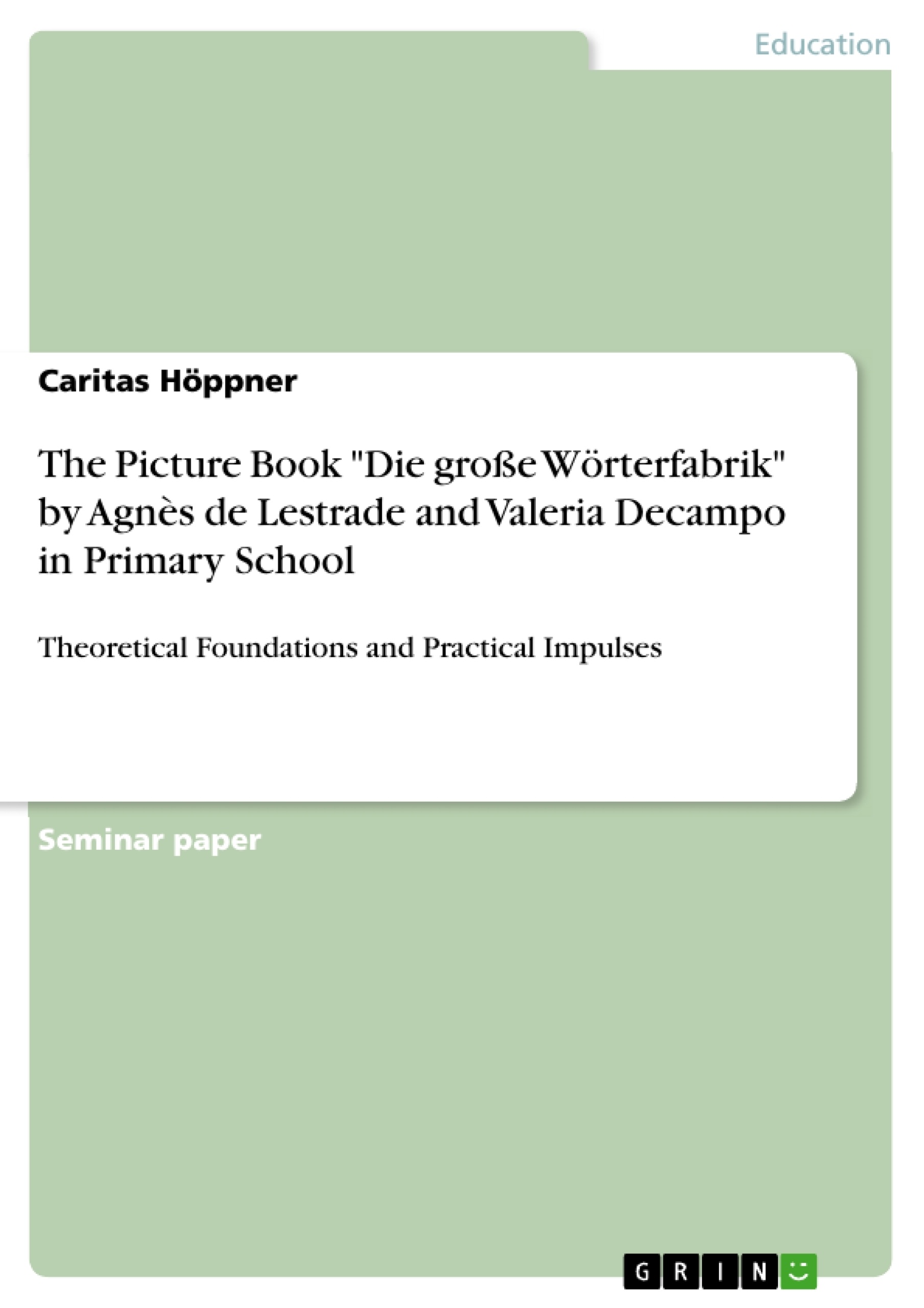This paper uses the picture book "The Great Dictionary Factory" by Agnès de Lestrade and Valeria Decampo to highlight how children can be supported on the path of their own writing. How do children learn to gain experience in the world of writing and discover the world and themselves in the process? What preconditions must be in place for writing to take place? What impulses are possible and suitable to enable children to make the transition from the real world of the classroom to the world of imagination? How is it possible to open up a space in which children think about language, get to know words as something valuable with which one can discover a lot and learn to understand themselves as language creators to whom words obey?
Inhaltsverzeichnis (Table of Contents)
- Introduction.
- The world of words
- The picture book as a medium of literary experiences
- “Die große Wörterfabrik”.
- General
- Content
- Illustration
- Ratio image text
- Language
- Writing leeway.
- Time
- Freedom from fear
- Interior design
- The beginning
- Writing occasions.
- My Word
- The Word Store
- Presentation of results
- Conclusion.
Zielsetzung und Themenschwerpunkte (Objectives and Key Themes)
This work examines how children can be supported in developing their writing skills, focusing on the use of picture books in the classroom. It explores how children learn to engage with language and discover their own voices through writing, while exploring the importance of creating a supportive environment that encourages creativity and self-expression.
- The role of picture books in fostering literary experiences and supporting children's writing development.
- The importance of creating a classroom environment that encourages creative writing and exploration of language.
- The significance of providing opportunities for children to engage with words and express themselves creatively.
- The concept of "writing leeway" and its contribution to children's writing confidence.
- The use of a specific picture book, “Die große Wörterfabrik,” as a tool for exploring themes of language, creativity, and communication.
Zusammenfassung der Kapitel (Chapter Summaries)
- Introduction: This chapter sets the stage for the study, introducing the main research question concerning how children can be supported in developing their writing skills. It highlights the importance of picture books as a tool for fostering creativity and exploring language.
- The world of words: This chapter explores the power of language and its role in shaping our understanding of the world. It discusses how children can engage with language in creative ways, exploring different uses of words and experimenting with their meaning.
- The picture book as a medium of literary experiences: This chapter examines the unique qualities of picture books as a tool for promoting literacy and inspiring creativity in children. It highlights the role of picture books in fostering early literacy skills, promoting visual literacy, and offering opportunities for emotional and cognitive development.
- “Die große Wörterfabrik”: This chapter focuses on a specific picture book, “Die große Wörterfabrik,” analyzing its content, illustrations, and its potential for engaging children in language exploration and creative writing.
- Writing leeway: This chapter delves into the concept of "writing leeway," exploring the importance of providing children with the freedom to express themselves creatively through writing. It examines various factors that contribute to writing leeway, such as time, freedom from fear, and a supportive classroom environment.
- Writing occasions: This chapter focuses on specific examples of how children can be guided towards creative writing activities through the use of picture books. It explores strategies for generating writing prompts, developing engaging writing experiences, and fostering a love for language.
Schlüsselwörter (Keywords)
The primary focus of this work is on promoting children's writing development through the use of picture books. Key terms include: creative writing, picture books, literacy development, writing leeway, language exploration, classroom environment, “Die große Wörterfabrik”, and children’s literature.
- Arbeit zitieren
- Caritas Höppner (Autor:in), 2014, The Picture Book "Die große Wörterfabrik" by Agnès de Lestrade and Valeria Decampo in Primary School, München, GRIN Verlag, https://www.grin.com/document/1175598



